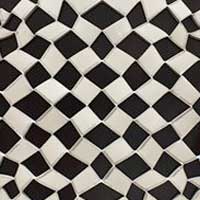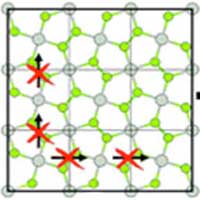 3D micro-/nanofabrication holds the key to build a large variety of micro-/nanoscale materials, structures, devices, and systems with unique properties that do not manifest in their 2D planar counterparts. Recently, scientists have explored some very different 3D fabrication strategies such as kirigami and origami that make use of the science of cutting and folding 2D materials/structures to create versatile 3D shapes.
3D micro-/nanofabrication holds the key to build a large variety of micro-/nanoscale materials, structures, devices, and systems with unique properties that do not manifest in their 2D planar counterparts. Recently, scientists have explored some very different 3D fabrication strategies such as kirigami and origami that make use of the science of cutting and folding 2D materials/structures to create versatile 3D shapes.
Wednesday, May 27, 2020
Kirigami/origami: unfolding the new regime of advanced 3D microfabrication/nanofabrication
 3D micro-/nanofabrication holds the key to build a large variety of micro-/nanoscale materials, structures, devices, and systems with unique properties that do not manifest in their 2D planar counterparts. Recently, scientists have explored some very different 3D fabrication strategies such as kirigami and origami that make use of the science of cutting and folding 2D materials/structures to create versatile 3D shapes.
3D micro-/nanofabrication holds the key to build a large variety of micro-/nanoscale materials, structures, devices, and systems with unique properties that do not manifest in their 2D planar counterparts. Recently, scientists have explored some very different 3D fabrication strategies such as kirigami and origami that make use of the science of cutting and folding 2D materials/structures to create versatile 3D shapes.
Construction of hollow nanoreactors for enhanced photo-oxidations
 Researchers have demonstrated a facile synthesis of hollow-structured photocatalysts with controllable spatial location of active metals, chemical compositions and tunable shell thickness.
Researchers have demonstrated a facile synthesis of hollow-structured photocatalysts with controllable spatial location of active metals, chemical compositions and tunable shell thickness.
New antiviral and antibacterial nanostructured surface
 Researchers have found a way to impart durable antiviral and antibacterial properties to an aluminum alloy used in hospitals.
Researchers have found a way to impart durable antiviral and antibacterial properties to an aluminum alloy used in hospitals.
Van der Waals junction spin valves without spacer layer
 Distinct from traditional spin valves with a sandwich structure consisting of two ferromagnetic metals decoupled by the insertion of a non-magnetic spacer, recently, a research team has demonstrated two-state and three-state spin-valve effects using Fe3GeTe2 vdW homo-junctions without any spacer layer. Realization of multi spin states using the vdW interfaces could be important for non-volatile spintronic applications.
Distinct from traditional spin valves with a sandwich structure consisting of two ferromagnetic metals decoupled by the insertion of a non-magnetic spacer, recently, a research team has demonstrated two-state and three-state spin-valve effects using Fe3GeTe2 vdW homo-junctions without any spacer layer. Realization of multi spin states using the vdW interfaces could be important for non-volatile spintronic applications.
Using in-situ AFM to get a sneak peek of a key process in battery 'life'
 Researchers visualized the formation of a solid electrolyte interphase on battery-grade carbonaceous electrode materials using in situ atomic force microscopy (AFM). This will help researchers design and build batteries with higher performance and durability.
Researchers visualized the formation of a solid electrolyte interphase on battery-grade carbonaceous electrode materials using in situ atomic force microscopy (AFM). This will help researchers design and build batteries with higher performance and durability.
Scientists devise a way to determine the viability of predicted 2D materials
 An international team of researchers has proposed a new way to test the structural stability of predicted 2D materials. The testing revealed a number of materials erroneously proposed earlier. The scholars believe that the use of the new method will further help to avoid mistakes in the development of two-dimensional nanomaterials that are in high demand in the modern world.
An international team of researchers has proposed a new way to test the structural stability of predicted 2D materials. The testing revealed a number of materials erroneously proposed earlier. The scholars believe that the use of the new method will further help to avoid mistakes in the development of two-dimensional nanomaterials that are in high demand in the modern world.
Self-cleaning aluminium surface without scrubbing and using chemicals
 Scientists have developed a self-cleaning metallic surface that is structured with a laser process in such a way that water droplets no longer adhere and dirt particles can be removed from the surface.
Scientists have developed a self-cleaning metallic surface that is structured with a laser process in such a way that water droplets no longer adhere and dirt particles can be removed from the surface.
Subscribe to:
Comments (Atom)
